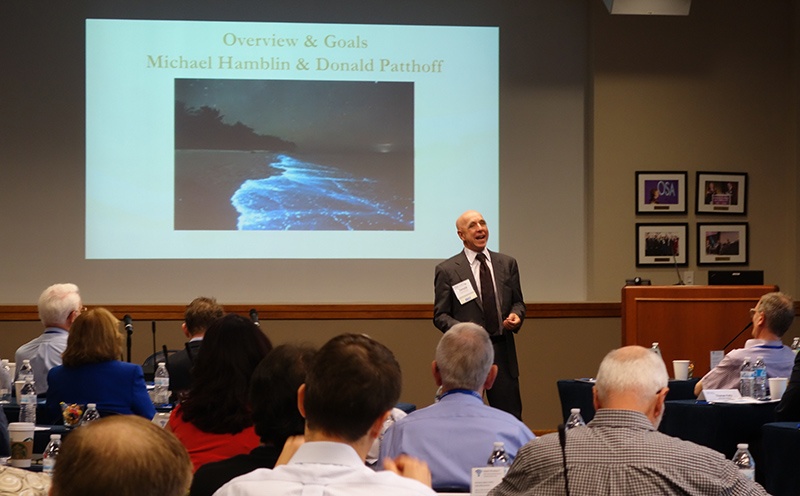Photobiomodulation – where it started and where is it going?
Photobiomodulation – where it started and where is it going?
Johnathan George
Juanita Anders Ph.D., Professor of Anatomy, Physiology and Genetics and Professor of Neuroscience at Uniformed Services University of the Health Sciences, presented the history of PBM and how the past has lead to the current obstacles to PBM’s acceptance. The laser was invented in May of 1960 and by 1963 it was being studied for surgical applications. At the same time the laser was being evaluated as a replacement for the scalpel, its biomodulating effects on tissue were also being explored. In 1965 Endre Mester began experimenting with medical lasers as a treatment for cancer. While the cancer treatment failed, he noticed that the hair on the shaven mice treated with laser light regrew at an increased rate. Dr. Mester was the first to describe biostimulation and realize the therapeutic value of lasers.
While the use of laser as a scalpel replacement in surgery was quickly adopted, Anders discussed how the mechanisms of PBM were unknown and complex, and how it remains relatively unknown and little used today. Possibly due to the complexity of selecting frequency, dose, and modulation when the molecular mechanisms were unknown, many early experiments in PBM reported negative results. Anders also talked about how a major hurdle in the acceptance of PBM was the early failure to unify terminology. Dr. Mester began by describing the therapy as low power laser rays in 1968 and subsequently switched to biostimulation. Industry has used over eight different names for PBM from Cold Laser Therapy to Low Level Laser Therapy (LLLT). Only within the last few years have researchers and clinicians migrated to the common term “photobiomodulation” to describe the therapy.
Next, Michael Hamblin Ph.D., Principal Investigator for at the Wellman Center for Photomedicine at Massachusetts General Hospital, and the leading researcher on the mechanisms of PBM, presented the latest research on the mechanisms of PBM. The research he presented ranged from suppressing pain in mice with PBM to preconditioning mice with PBM for enhanced muscle performance.
In an open discussion later in the day attendees talked about the hurdles to PBM’s adoption. The wide number and variety of potential applications for PBM seems to have been an unexpected hindrance to the acceptance of PBM. In each application of PBM there are different types of tissues, all with their own optical and biological parameters. In translating from biological mechanism to insurance-approved clinical application these parameters must be studied and proven individually. This presents a challenge to regulatory agencies and device manufacturers who must focus on specific applications for a device rather than the overly broad set of potential applications.
More to come from this afternoon’s session on overcoming these hurtles as well as a closer look at several clinical applications of Photobiomodulation.

Host Donald Patthoff from the Academy Laser Dentistry kicked things off providing an overview of the goals of the Incubator.

Praveen Arany, current president of the North American Association for Photobiomodulation Therapy discussing the future of the technology – and for the community.
